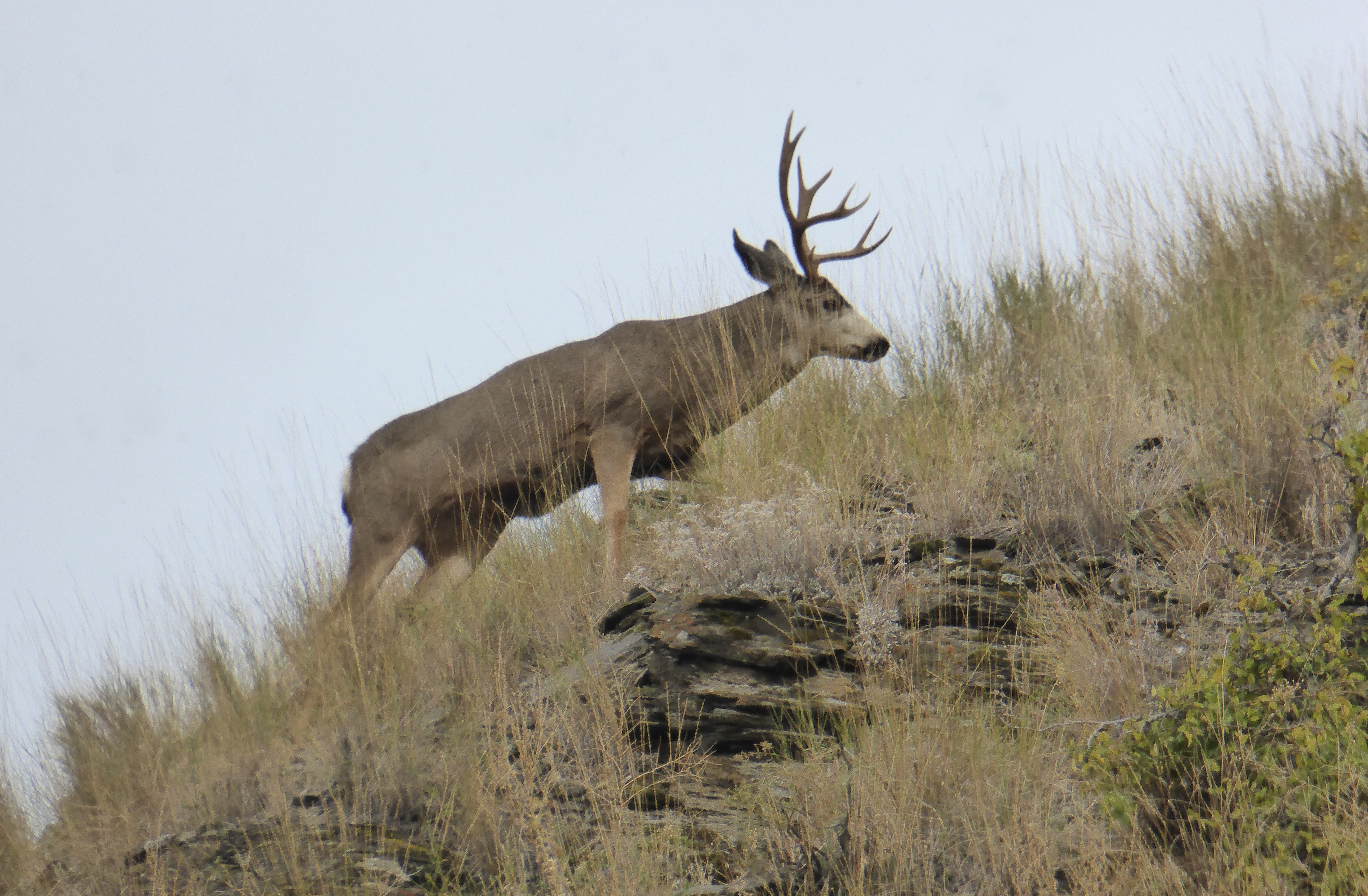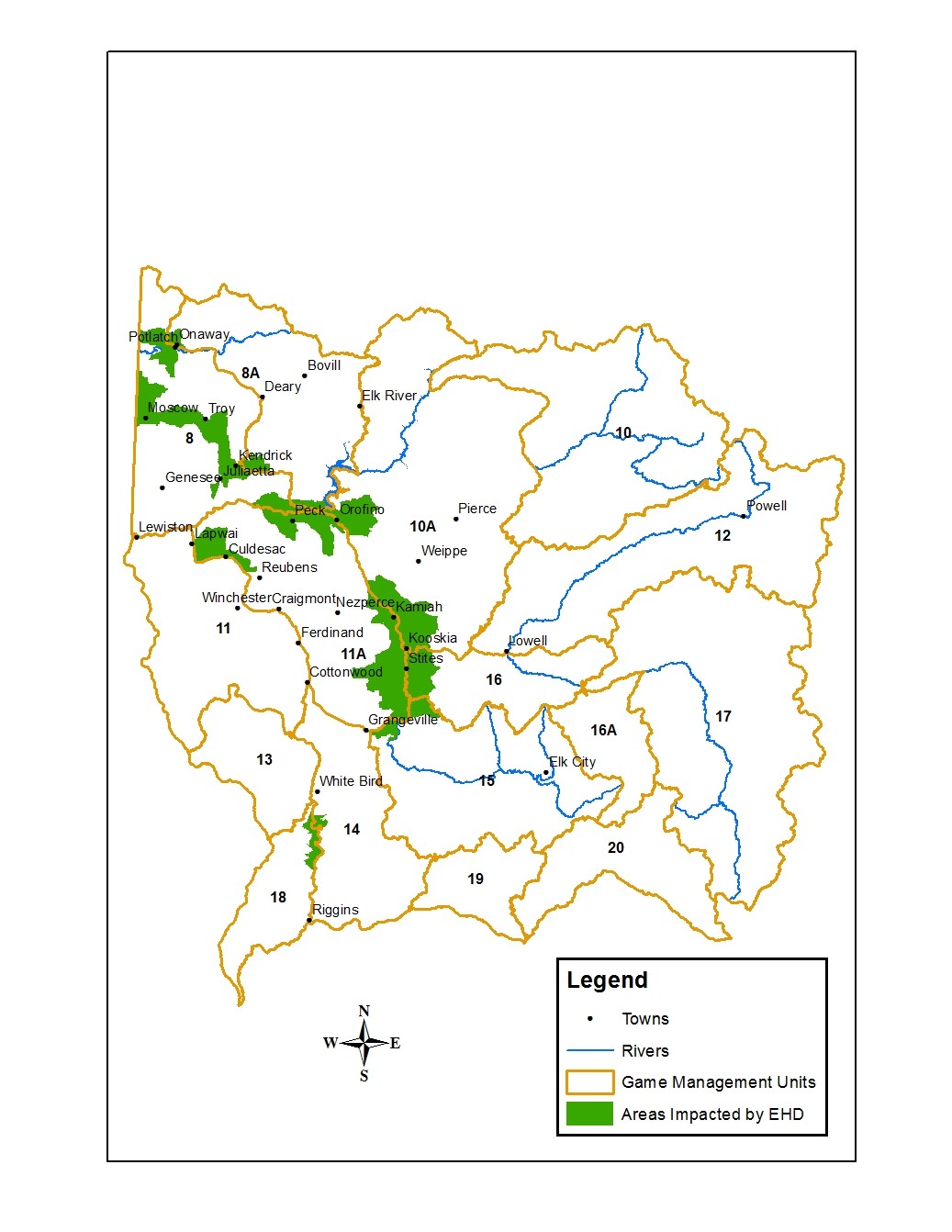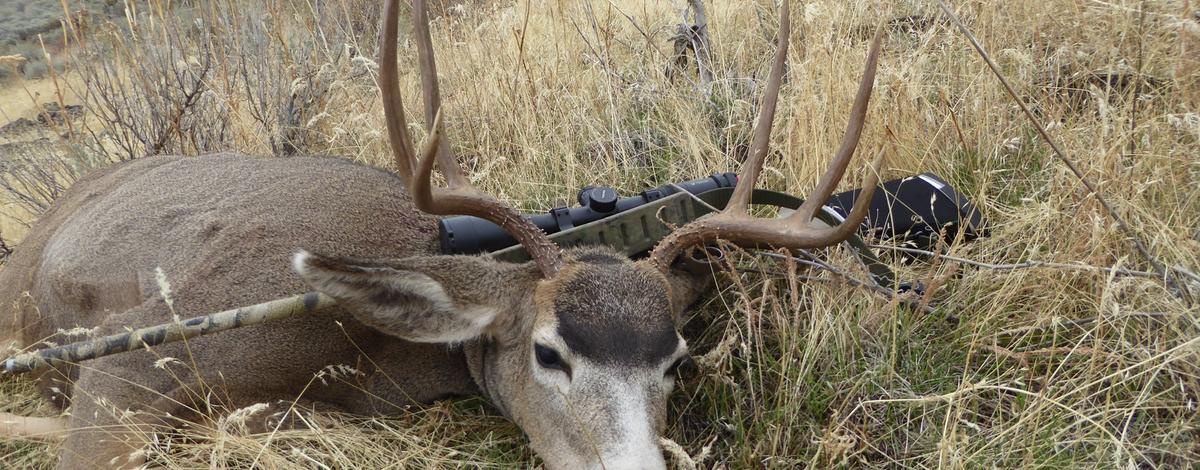If you're a rifle hunter, your deer season starts Oct. 10 in most parts of the state. The general, any-weapon deer hunts includes most, but not all, units. You can find out which units are available in the Big Game Seasons and Rules booklet.

Hunters can expect a fair-to-good deer hunting season, but with some caveats. Portions of the Clearwater Region and some other localized areas are in the midst of an Epizootic Hemorrhagic Disease outbreak that will likely to continue until areas get a hard frost, which will kills gnats that are the carriers of the disease. You can get updates on the EHD outbreak on the Clearwater Region webpage.
While it's hard to gauge how much of an effect the outbreak will have on white-tailed deer hunting, it's in relatively limited – although important – geographic areas in terms of overall units available for whitetail hunting.
Biologists have also experienced EHD outbreaks in the past, and have not seen significant drops in the overall whitetail harvest because of it. Having said that, hunters will want to pay close attention to which areas are likely to be affected, which is shown in this map produced in late September.
Fish and Game advises hunters to avoid shooting deer that look sick from EHD, or other diseases.

Mule deer
Mule deer hunters will likely see hunting conditions and the number of animals available very similar to last year, and possibly better in some areas due to a relatively mild winter, but still down from the boom years prior to 2017.
The severe winter of 2016-17 “reset the clock” for mule deer, according to Fish and Game's Deer/Elk coordinator Rick Ward. Mule deer herds in most areas of the state are heading in the right direction, but still haven’t completely bounced back.
“Fawn survival the last two winters has been above average, which should translate to more deer,” he said.
However, mule deer are also found across a variety of habitats and elevations throughout the state, so all herds aren’t rebounding at the same rate, and some may be decreasing.
Consecutive normal winters means a couple things of note to hunters: Production of young bucks and survival of older ones.
While fawn survival typically garners much of the attention because young bucks make up most of the harvest, mild winters also allow those bucks that survive their first winter and hunting season to grow into mature animals, so it’s likely hunters will also have a better chance of finding more trophy-sized bucks.
Hunters are reminded to double check the seasons and rules before their hunts because things have changed since last year, including changes to some antlerless youth hunts in Southern Idaho. There's also been extensive changes to nonresident deer tags, which are now limited to one hunting unit.
To read more about deer hunting and elk hunting for 2021, including detailed regional outlooks, go to the Big Game Outlook.

